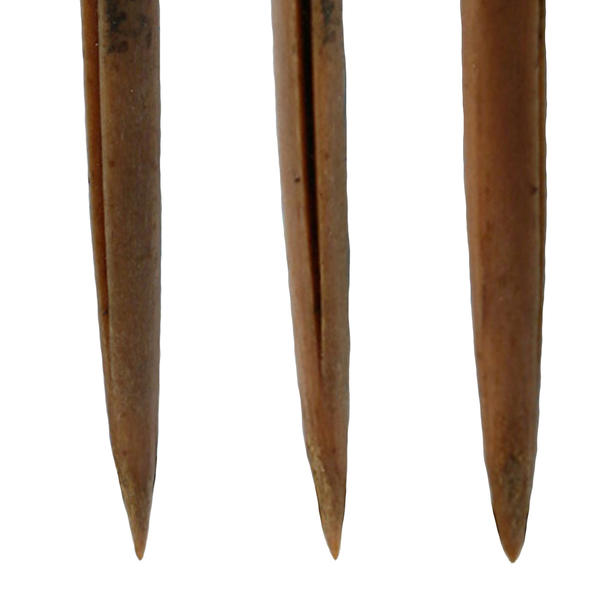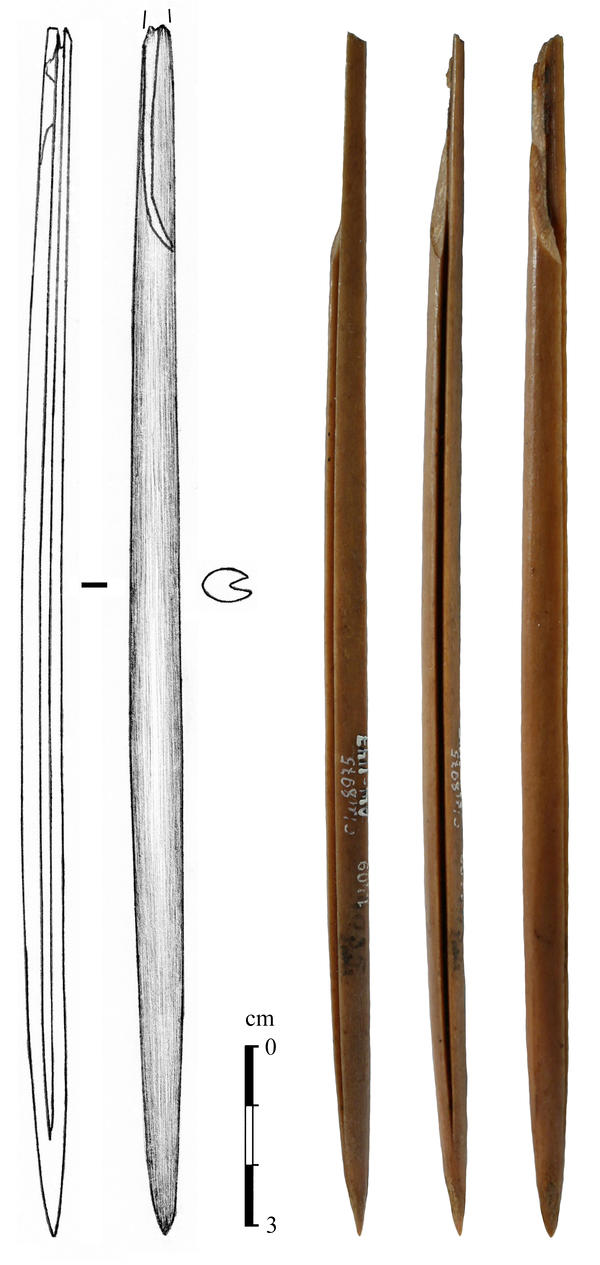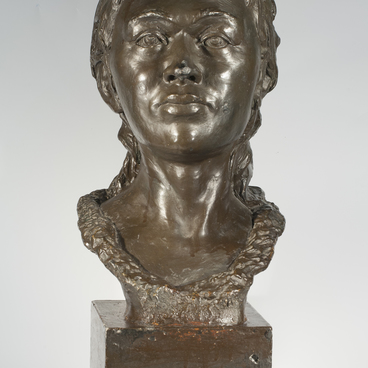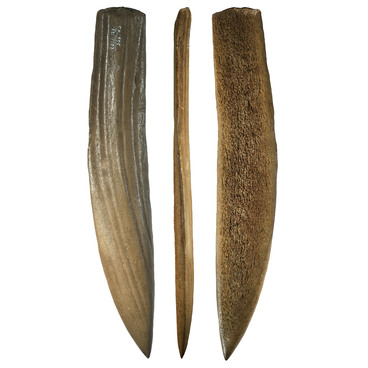Needle-shaped arrowheads were widely used in the Urals in the Mesolithic era (13,000-8,000 B.C.).
Needle-shaped arrowhead
Creation period
10,800 – 10,600 years ago
Technique
Scraping, planing, polishing, cutting
Exhibition
5
Open in app#9
Unknown Author
Needle-shaped arrowhead
#10
#11
In the Middle Trans-Urals, bone arrowheads of the Mesolithic period were first found at the end of the 19th century. In 1878, archaeologist Ferdinand Gebauer discovered these tools in a cave on the banks of the Pyshma River, which today bears his name. Single fragments of such arrowheads were found in the lower layer of the foot of the Dyrovaty Rock on the Chusovaya River in the Sverdlovsk Region. Many artifacts of the Mesolithic period were found during gold mining on the peat bog of Shigir, seventy kilometers from Yekaterinburg.
#2
Researches from the Oxford Radiocarbon Laboratory, the UK, used the radiocarbon AMS method to determine the age of this exhibit as more than ten thousand years.
#16
The arrowhead was cut using chisels of the central part of a large animal’s bone. Then it was given the desired shape with stone knives and scrapers. To make the bone easier to cut, it was placed in an alkaline solution made of water and ash. The bone was left in it for several months and became soft and easy to work with, while after a while it became callous again.
Needle-shaped composite arrowhead.
#13
There are several types of bone arrowheads. The weapon displayed in the museum is classified as a needle-shaped inset type with a conical nozzle and one long groove.
#14
The narrow groove of the arrowhead has a trapezoidal section and ends in a spot where the rod changes into a conical nozzle. The nozzle is the load-bearing part of the arrowhead intended to be fixed to the pole. The groove is four millimeters deep and two millimeters wide, while its total area is about six centimeters. Grooves were made to attach thin flint plates to them. Inset plates were placed on the adhesive substance.
The basic ingredient of the ancient glue was wood tar with various impurities. Most of the arrowheads were used to hunt large animals - elks or bears. When an arrow hit an animal’s body, some of the flint plates fell out of the grooves and remained in the wound. This increased the injured area, and the animal died faster. Flint plates have not survived till present.
#15
The Shigir collection contains about a thousand bone arrowheads of various shapes and sizes made at different times in the territory of the contemporary Sverdlovsk Region. They were created in the interval ranging from 9,000 – 4,000 B.C. The artefacts’ exact age can only be determined using the radiocarbon method.
#17
Sverdlovsk Regional Ethnography Museum
read morehide
00:00
00:00
1x
Needle-shaped arrowhead
Creation period
10,800 – 10,600 years ago
Technique
Scraping, planing, polishing, cutting
Exhibition
5
Open in app
Share




